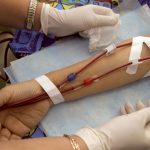 I’ve written before about the growing importance of recombinative innovation. That is, when we take something from one field, and apply it in another. A great example of this comes via a recent study from Imperial College London, where a computer modelling technique that’s usually used in airplane research and deployed it to improve dialysis treatment.
I’ve written before about the growing importance of recombinative innovation. That is, when we take something from one field, and apply it in another. A great example of this comes via a recent study from Imperial College London, where a computer modelling technique that’s usually used in airplane research and deployed it to improve dialysis treatment.
Dialysis is used when our kidneys stop working properly to help remove waste products and excess fluid from our body. The fluid is diverted to a machine where it’s cleaned, but to do this a junction must be formed between an artery and vein in the patients arm. This connection is called an arterio-venous fistulae (AVF).
Because of the unsteady blood flow patterns however, around half of all AVFs block up and subsequently fail, thus resulting in multiple installations. Indeed, some patients have to undergo so many procedures that they run out of places on the arm where AVF can be conducted.
AI to the rescue
The team borrowed modelling techniques that are typically used in the aerospace industry to train a machine learning algorithm, which in turn produced an optimal shape of AVF to reduce the unsteadiness of blood flow as much as possible.
This prototype device has already undergone initial tests in pigs, where it was successful at reducing blockages. They next plan to conduct further trials in pigs to further refine the solution.
“We routinely use computer simulations to study air flow over aeroplanes. These same techniques, can now be used to optimise medical devices, including AVF,” the authors say.
Suffice to say, they are still some way off testing their product on humans, let alone deploying it onto the market, but they are nonetheless confident that it will prove beneficial, not only to improving dialysis, but also other medical procedures that require optimized blood vessel connections, such as heart by-pass grafts and kidney transplants.